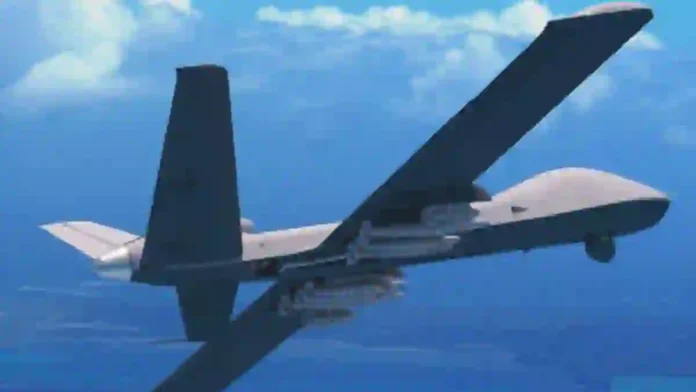India is on the cusp of a significant upgrade to its unmanned aerial and surveillance capabilities as the Defence Acquisition Council (DAC) readies to approve the procurement of 87 armed Medium Altitude Long Endurance (MALE) drones for the nation’s armed forces. Simultaneously, the Cabinet Committee on Security (CCS) is set to green-light the construction of six Airborne Early Warning and Control (AEW&C) aircraft based on the Airbus 319 platform.
Both initiatives are intended to address urgent “hardware and force-multiplier gaps” highlighted during the recent Operation Sindoor, according to officials familiar with defence planning.
Read- Operation Sindoor And Aftermath: Shifting The Security Paradigm In South Asia
From Surveillance To Combat: India’s First Major Armed Drone Acquisition
Historically relying on Israeli-origin Heron drones for intelligence, surveillance, and reconnaissance (ISR) missions, India has yet to induct any armed drones into frontline military service. The approved purchase of MQ-9B Predator drones from the United States is not expected before 2028.
Thus, the 87 MALE drones, to be acquired at a project cost of around ₹20,000 crore, represent the Indian military’s first major entry into the use of armed drones capable of executing precision strikes. These UAVs are anticipated to be equipped with air-to-ground missiles and laser-guided bombs, sourced primarily through indigenous (“Make in India”) channels.
The Defence Procurement Board, headed by Defence Secretary R K Singh, has already approved the MALE drone deal, and the DAC, chaired by Defence Minister Rajnath Singh, is poised to formally issue an Acceptance of Necessity (AoN).
Following this, the Defence Ministry will invite bids from leading armed drone providers, including General Atomics, Israeli Aircraft Industries, the European Eurodrone consortium, as well as major Indian firms such as Adani-Elbit, Tata, Kalyani Forge, and HAL.
Read- Nyoma Air Base: India’s High-Altitude Sentinel—A Game-Changer For The IAF In Himalayan Power Play
Read- Modi’s Iron Shield: The Vision Behind Bharat’s Ballistic Missile Defence
Surveillance Aircraft Capabilities: Closing The Gap With Pakistan
In parallel, the CCS is expected to resolve longstanding delays and approve the ₹19,000 crore (with a possible escalation to ₹26,000 crore) program for six AEW&C aircraft based on the Airbus 319.
These platforms, which India lags behind Pakistan in fielding, will be sourced as used airliners, hardened by Airbus in France, and then fitted with indigenous DRDO Netra IA radars and advanced mission control systems. This combination is designed to greatly enhance India’s real-time airspace monitoring, airborne command, and missile defence capabilities.
Operation Sindoor: The Catalyst For Accelerated Acquisition
The strategic urgency behind these acquisitions was sharpened by Operation Sindoor—a four-day military confrontation with Pakistan in response to the April 22 Pahalgam terror attack. During the operation, Pakistan deployed Turkish and Chinese-supplied drones, including kamikaze variants, to target
Indian military installations across multiple border cities. While India relied on sophisticated air defence systems to intercept a majority of these threats, the conflict exposed deficiencies in its own armed drone inventory, particularly in executing retaliatory strikes and continuous ISR over hostile territory.
Indigenous Upgrades And Future Planning
In addition to the new armed drone fleet, India is considering retrofitting up to 200 existing Heron ISR drones with weapon systems, a project to be undertaken with Israel’s Aerospace Industries (IAI).
This upgrade would include mounting hard-points for precision munitions and enhancing live data transmission capabilities for real-time targeting. Further, the Ministry of Defence has solicited inputs from the armed forces on related urgent requirements, such as long-range missiles, aerial refuellers, and loitering munitions.
These procurements mark a strategic inflection point for India’s defence posture, aiming to close capability gaps identified in recent kinetic engagements and to enhance both the deterrent effect and operational flexibility of the armed forces.
By advancing indigenous manufacture and retrofitting existing assets, India reinforces its commitment to self-sufficiency in defence technology while responding decisively to rapidly evolving regional threats.
Agencies




